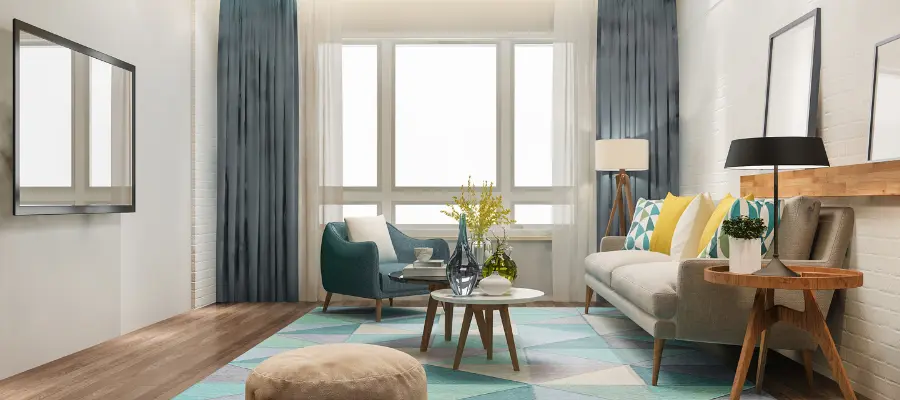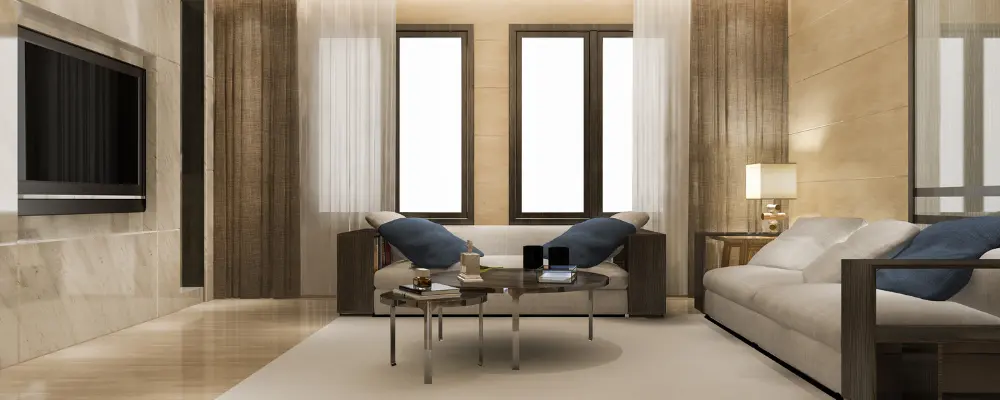When anybody is looking for a new home, apartment, or office space, they’ll definitely hear terms like carpet area, built-up area, and super built-up area. These terms specify different parts of the total space, which directly affect the cost. This is because the price is usually based on the number of square feet being occupied. Because they generally pay for the number of square feet they are going to be occupying. Thus, it is crucial to have a clear idea about these terms and their differences.
In today’s blog of Brick & Bolt you’ll going to understand the differences and calculation formulas of Carpet Area, Built-up Area, And Super Built-up Area.
- 1 What is a Carpet Area?
- 2 What is the RERA Carpet Area?
- 3 How to Calculate Carpet Area & RERA Carpet Area?
- 4 What is a Built-up Area?
- 5 How to Calculate Built-up Area?
- 6 Carpet Area Vs Built Up Area
- 7 How to Calculate Super Built-up Area?
- 8 What is The Loading Factor?
- 9 Why You Should Know About the Loading Factor?
- 10 Built-Up Area Vs Super Built-up Area
- 11 Indian Act for Carpet Area, Built-up Area, And Super Built-up Area
- 12 The Final Word
What is a Carpet Area?
Inside a home, the area within the inner walls, which is covered by the carpet or the net usable floor space, is called the carpet area.
The carpet area would include the areas of the bedrooms, living room, kitchen, bathrooms, balconies and staircases. The outside and inside walls, terraces, common areas, lifts, lobby, hallways, utility ducts, etc. are not included.
What is the RERA Carpet Area?
The Real Estate Regulatory Authority (RERA) carpet area is the usable space people will actually live in. This includes the area within the apartment’s walls but excludes any external areas, common areas, balconies, verandas, or open terraces. However, the thickness of the interior walls is included in the measurement.
How to Calculate Carpet Area & RERA Carpet Area?
With the following formula, you can calculate the total carpet area:
Carpet area = (Bedroom + Living Room + Kitchen + Balconies + Toilets)areas – The Thickness of the Inner walls.
Also, the formula to calculate the RERA Carpet Area is
RERA Carpet Area = Net Usable Floor Area of the Apartment (Exclude External Walls, Terrace Area, Balcony Area, & Verandah Area) + Areas of the Internal Partition Walls
What is a Built-up Area?

The built-up area is the total floor space of the house, including everything within the walls. This includes the area people can walk on (carpet area), including the thickness of the walls and balconies, and even an exclusive terrace if you have one. Staircases and other living spaces inside the apartment are also included. Common areas like hallways, lobbies, elevators, and amenities (like a swimming pool or gym) are not part of the built-up area, but you’ll still be paying for your share of them. That’s why the built-up area typically only makes up 70-80% of the total area you’ll be charged for, which is called the super built-up area.
How to Calculate Built-up Area?
Built-up Area is calculated by the following formula
Built-up Area = Carpet Area + Wall Areas + Terrace and Balcony + Exclusive Corridor
Carpet Area Vs Built Up Area
According to RERA, the carpet area is the area covered by the bedroom, living room, kitchen, balconies, toilets, and the thickness of internal partition walls.
The built-up area incorporates the carpet area, external walls, terraces or balconies, and any exclusive corridors.
The built-up area is always larger than the carpet area as it does not include common areas such as lifts, security rooms, lobbies, or clubhouses.
How to Calculate Super Built-up Area?
Super built-up area is calculated by the following formula
Super built-up area = Built-up Area + Common Areas (such as lobbies, stairs, lift, pool, etc.).
What is The Loading Factor?
Loading factor is the usable space (carpet area) compared to the total area (super built-up area) including common areas and walls.
It is calculated by extracting carpet area from the super built-up area.
Loading Factor = Super Built-up Area – Carpet Area
A high loading factor indicates that most of the total area is dedicated to actual living space. This is important for homebuyers as it helps them understand how much usable space they’re getting for their money.
Why You Should Know About the Loading Factor?
The following are the important things to consider about the loading factor:-
- The “ideal” loading percentage can vary based on market practices, the type of residential complex, and the amenities offered.
- A loading factor of 25% to 30% for a property is considered reasonable and standard in the real estate industry.
- Properties with a loading percentage significantly higher than 30% might indicate that a larger portion of the total cost is going towards common areas rather than the actual living space.
Built-Up Area Vs Super Built-up Area
A built-up area includes all the carpet area, balcony, exclusive corridor, staircase, terrace, etc., as well as the thickness of all walls.
Super Built-up Area, sometimes referred to as a “saleable area,” consists of a private built-up area as well as common areas like lifts, shared hallways, stairwells, a clubhouse and other amenities.
Indian Act for Carpet Area, Built-up Area, And Super Built-up Area
The RERA act made it compulsory for builders to sell flats and houses depend on the carpet area. Before this rule, builders sold flats and houses based on the super built-up area, which included the carpet area plus common areas like lobbies, pools, gyms, and staircases. This made buyers think they were getting more space than they actually were, leading to them paying more.
With the RERA carpet area rule, if a builder promises a certain carpet area for an under-construction project but delivers less, they must refund the difference with annual interest within 45 days. If the delivered area is more than promised, the buyer will pay the extra amount, but this extra can’t exceed 3% of the promised area.
You can also read more about the Comprehensive Guide to Buying Property in India as an NRI: Legalities and Procedures.
The Final Word
Whenever common people go to buy a new house, real estate agents or builders use confusing terms like carpet area and built-up area. It’s important to know what these words mean and how to calculate them so people won’t get tricked.
We hope this article will help you understand these terms better.
Read More: What are the Advantages of Building a Custom Home Over Buying a Pre-constructed Home.

